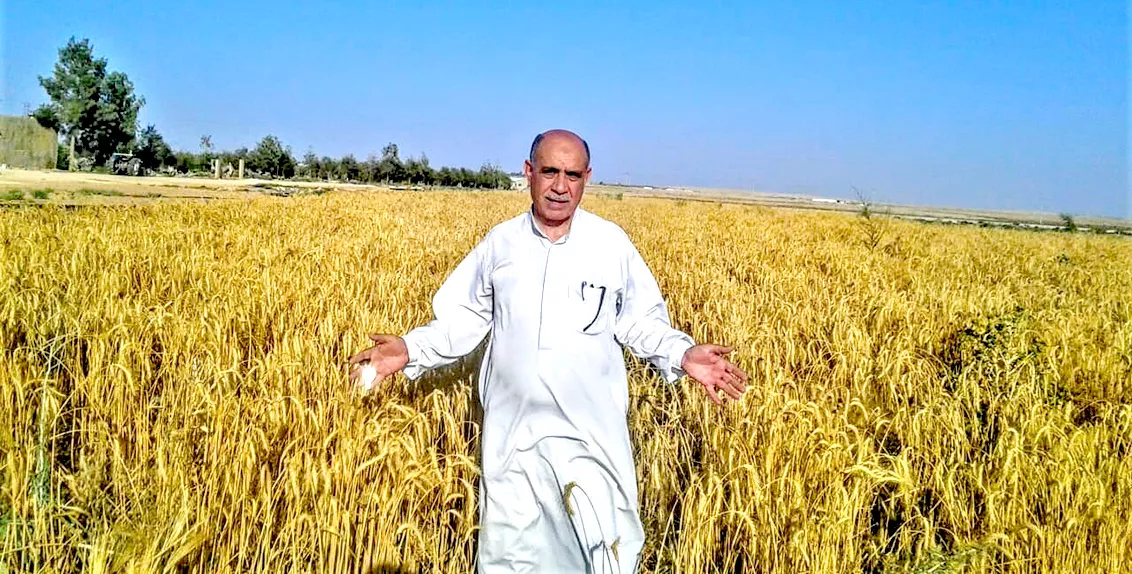Farmers in Jordan catch up with biosaline agriculture
For Mr. Odeh Al Turman, a man in his sixties, reaching the age of retirement, was not the end of the road. Rather, it was the start of another kind of job that he had always dreamed of.
Mr. Odeh Al Turman, who hails from Al Khalidiyeh, 20 km from the center of Mafraq Governorate to the east of Jordan, used to stand up at courts but two years ago he chose to toil on soil.
He started working in agriculture and growing crops. But he incurred great losses after he resorted to growing cash crops such as tomatoes and others.
After a season of losses, one day he decided to visit his town’s agricultural station, affiliated with the National Center for Agricultural Research, to inquire about fish farming.
Although it was a new thing for him, fish farming in the desert was worth trying, he thought, but it was only mere coincidence that made him change his mind and shift towards biosaline agriculture.
“In light of water scarcity and its high salinity level, I went to ask about fish farming at Al Khalidiyeh station, and after I sat down with the agricultural engineers there, they talked me into trying something new, that comes at a low cost, and that is a profitable investment,” he says.
They suggested growing barley, wheat and oat, but only using biosaline agriculture techniques due to saline soil and water.
Biosaline agriculture is promoted in Jordan by the International Center for Biosaline Agriculture (ICBA) in cooperation with the National Center for Agricultural Research. The concept is based on growing salt-tolerant plants and halophytes that can tolerate high levels of salinity and high temperatures.
The salinity of the Zarqa underground water basin, which provides Mr. Odeh Al Turman with the supply of water for his crops, rises in the summer to 2,000 parts per million (ppm) and falls to 1,500 ppm in winter.
“It was all sorted out and I walked out fully convinced of the idea, and I promised them to go back a few days later to get the seeds, to go ahead with the project, and that was at the end of 2017,” he recalls.
According to the farmer, preparing 0.1 hectare of land to grow vegetables used to cost him 200 to 300 Jordanian dinars (1 Jordanian dinar is around 1.41 USD), including the costs for seed sowing, installing a water network and so forth. But when it came to growing salt-tolerated plants, all of that needed no more than 120 Jordanian dinars.
Although he was late in catching up with the biosaline agricultural season, he managed to plant around 1.5 hectare of his land with the seeds he acquired from the National Center for Agricultural Research free of charge.
Upbeat about the yields, he adds: “Now I will invest the profits from the 1.5-hectare plot into preparing another 10 hectares.”
“This is a no-brainer, especially after the massive losses I incurred in conventional vegetable farming,” he continues.
“The only hurdle that still worries me is the lack of harvesting and sowing machinery as workers continue to control my work as they refuse to work on small plots of land and prefer to work in large areas. This costs me more and I would be much better off without such expenses,” he frets.
“But only if I am able to secure the machinery, I will be ready for the coming season with another 10 hectares,” he concludes.
